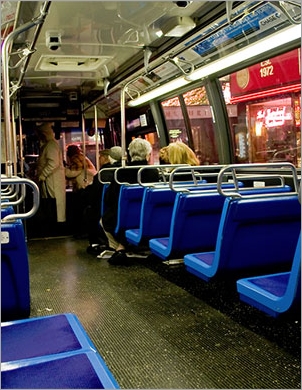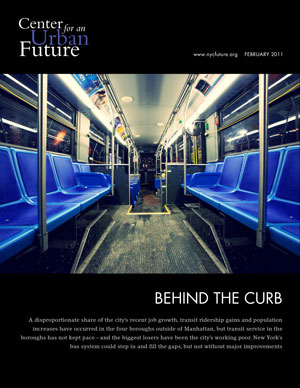

To keep up with New York’s dramatically changing economic geography — which has brought about profound changes in commuting patterns — the next mayor will have to focus his transportation efforts beyond Manhattan.
The number of New York City residents who commute to jobs outside of Manhattan has increased much faster than those who make the more traditional commute into the central business district. For example, between 1990 and 2008, the number of Staten Island residents who commute to work inside of Staten Island rose 32 percent; the number who travel to Brooklyn and adjacent counties in New Jersey rose 22 percent; and the number who make the trip into Manhattan barely changed at all — just a 4 percent increase in nearly two decades. Similarly, the number of people living in the Bronx traveling to Westchester County for work grew 38 percent; the number of Brooklyn commuters crossing the border into Queens rose 32 percent; and the number of Manhattan commuters in both cases grew just 13 percent.
According to the Metropolitan Transportation Authority’s recently released needs assessment (PDF), a majority of outer borough workers commuted to Manhattan for work every day in 1980, but, today, the majority travel inside their own borough and more than ever before are traveling to another outer borough. New York City’s public transportation system was not created to facilitate these sorts of commutes — and now that more than 16 percent of city commuters (PDF) travel at least an hour each way to work, more and more people are beginning to feel it.
To make a lasting dent in commute times, the new mayor will have to make a big political and financial commitment to the city's still underwhelming Select Bus Service system, a program that uses dedicated lanes, proof of payment and global-positioning technology to speed up bus times. Reasonable expansions of the city’s rail system will also have to be on the table. For example, M.T.A. is currently looking at bringing Metro-North trains from Co-op City on the eastern side of the Bronx through western Queens to Penn Station, but has not yet proposed a station in western Queens near the Sunnyside rail yards, which could improve commutes between the Bronx and Queens.
The Regional Plan Association’s proposed Triboro overground, which would use existing rights-of-way in Brooklyn, Queens and the Bronx to create a new circumferential subway line, is another project that should be seriously considered, as the Brooklyn portion would significantly improve east-west travel and the Queens portion would help plug an enormous transit gap in the southern half of the borough.
David Giles is the research director of the Center for an Urban Future. This essay was originally published by the New York Times on August 19, 2013 as part of Room for Debate and is republished with permission. Click here to view the full New York City’s Transportation Challenges debate.





